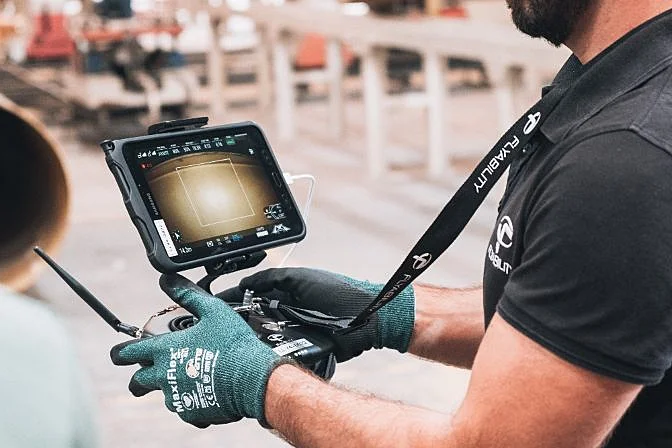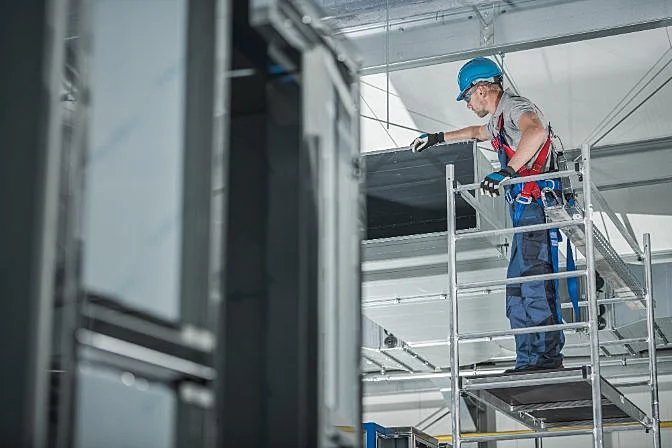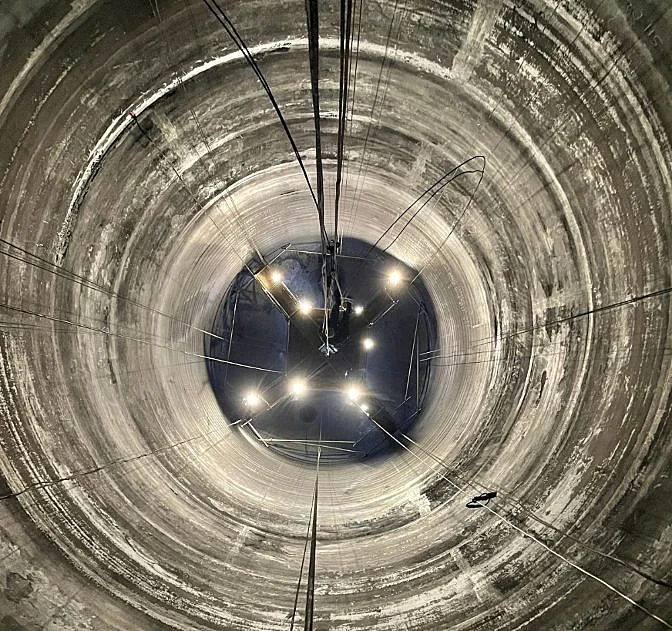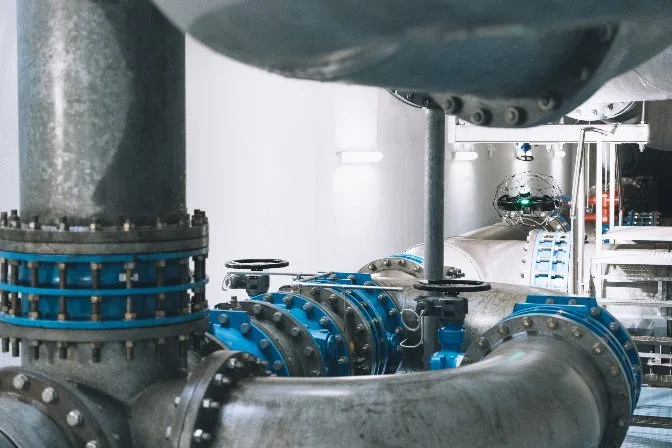What Is an Internal Inspection?
Internal inspection is a process used to examine the inside of an asset, such as a tank, boiler, or pipeline. It's a critical part of ensuring that all components of an asset are functioning properly and safely.
Along with external inspections, internal inspections help inspectors get a full picture of the condition of an asset. These inspections can also be referred to as interior or inner inspections. They are essential for identifying defects, wear, or damage that could lead to failure if not addressed in time.
Historically, internal inspections were conducted manually, with inspectors entering confined spaces to visually check the condition of the asset. However, advancements in technology have introduced safer and more efficient methods, such as using drones and robotics. For example, Flyability’s Elios 3 drone can enter hazardous environments without putting human inspectors at risk, collecting high-quality visual data from within.

Internal inspections are often performed to maintain the integrity and safety of industrial assets. In addition to visual checks, inspectors may use non-destructive testing (NDT) techniques like ultrasonic testing or radiography to gather more detailed information about the internal structure of the asset.
Internal inspections are just one of many applications of NDT. To learn more about how these methods are used across different industries, check out our complete guide on NDT.
Ways To Conduct An Interior Inspection
There are several methods for conducting interior inspections, each with its own advantages and challenges. The most common approaches include:
- Scaffolding
- Rope access
- Remote Visual Inspection (RVI) tools
Each method allows inspectors to collect necessary data while maintaining safety and efficiency. Depending on the environment and the type of asset being inspected, different techniques may be preferred or combined for better results.
Scaffolding
Scaffolding is a temporary structure built to allow inspectors to reach the interior of large or complex assets. While it has been the traditional method for internal inspections, it is often expensive and time-consuming due to the need for setup and removal. This can lead to significant downtime, which increases costs for companies.

Despite its drawbacks, scaffolding remains a reliable option when other methods are not feasible. However, many companies are now exploring alternatives to reduce costs and improve efficiency.
For more details on scaffolding and its uses, visit our comprehensive guide on the topic.
Internal Rope Access
Internal rope access is a technique used to inspect hard-to-reach areas, especially in tall or confined spaces. Certified technicians use ropes and safety systems to access the interior of structures like boilers, pressure vessels, and stacks.

This method is less costly than scaffolding but requires skilled personnel. It allows inspectors to perform close-up evaluations and even light maintenance work while remaining safe and stable.
Learn more about rope access and its benefits in our detailed guide.
Remote Visual Inspection Tools
Using remote visual inspection (RVI) tools like drones is becoming increasingly popular for internal inspections. Drones such as Flyability’s Elios 3 can navigate tight spaces and capture high-resolution images without requiring human entry into dangerous areas.
 The Elios 3 performing an inspection at a water department
The Elios 3 performing an inspection at a water department
These tools save time, reduce risks, and lower costs by eliminating the need for scaffolding and manual entry. They also help in reducing insurance premiums by minimizing exposure to hazardous environments.
Explore more about inspection tools and their applications in our in-depth guide.
Three Questions Inspectors Must Answer When Conducting Internal Inspections
During internal inspections, inspectors typically use non-destructive testing (NDT) methods to answer three key questions:
1. Are there any defects in the asset?
The first step in an internal inspection is to determine whether any defects exist. Inspectors document these findings and maintain a historical record of the asset’s condition over time.
2. Where are the defects located?
Locating defects is crucial, but it can be challenging, especially when using RVI tools. GPS and other positioning systems may not work well in indoor or confined spaces, making it harder to pinpoint exact locations. Inspectors often rely on blueprints, reference points, and advanced software to identify defect positions accurately.
Flyability’s Inspector 3.0 software, for example, provides a sparse point cloud that helps locate defects precisely, making it easier to share information with maintenance teams and site managers.
3. What are the dimensions of the defect(s)?
Knowing the size of a defect is essential for determining the next steps in maintenance. It helps decide whether further inspection, monitoring, or repair is needed.
Industries & Assets That Require Internal Inspections
Internal inspections are vital in various industries where the safety and reliability of equipment are critical. Even small issues can escalate into major failures, endangering workers and causing costly downtime.
Common industries that require internal inspections include aerospace, agriculture, chemicals, construction, manufacturing, maritime, mining, oil and gas, pipelines, power and utilities, and public safety.
Some of the most frequently inspected assets are boilers, cokes, grain bins, mines, pressure vessels, pipelines, sewers, stacks, tanks, and wind turbines.
Steel Pipe,Construction Steel Pipe,Stainless Steel Pipe,Structural Tubes
Shandong Jianlong Special Steel Co., Ltd. , https://www.jianlongsteelpipe.com
![<?echo $_SERVER['SERVER_NAME'];?>](/template/twentyseventeen/skin/images/header.jpg)